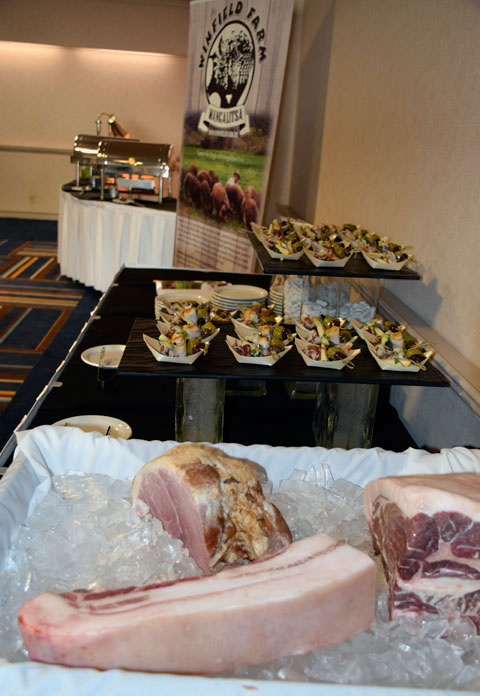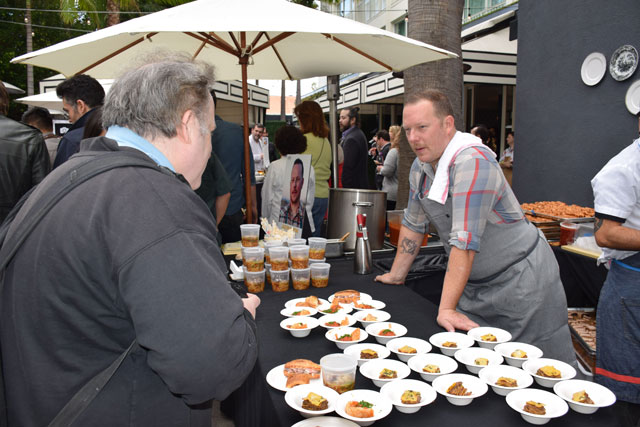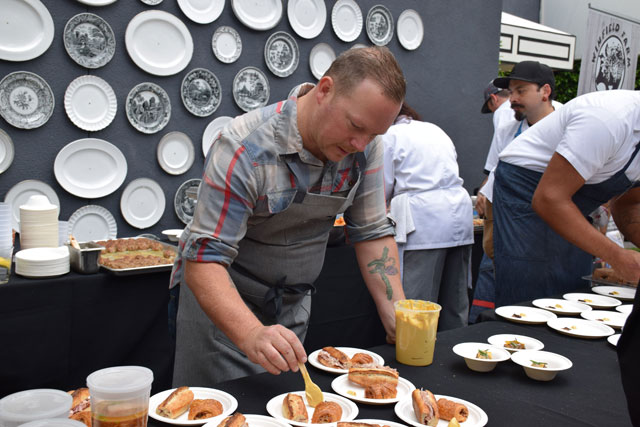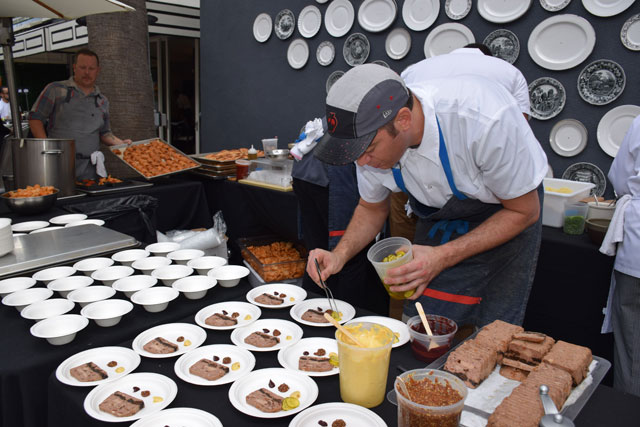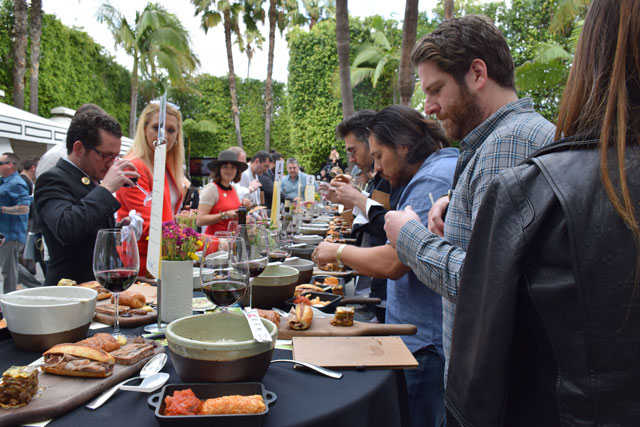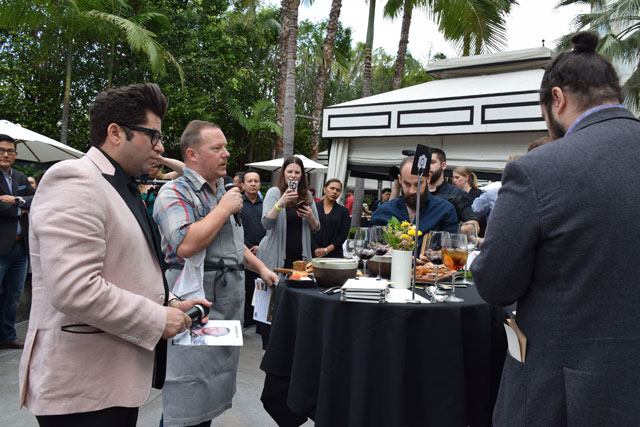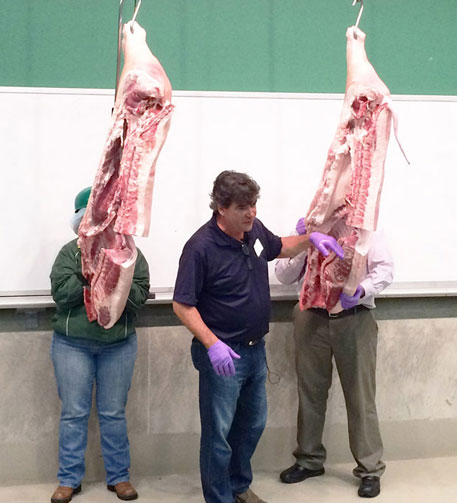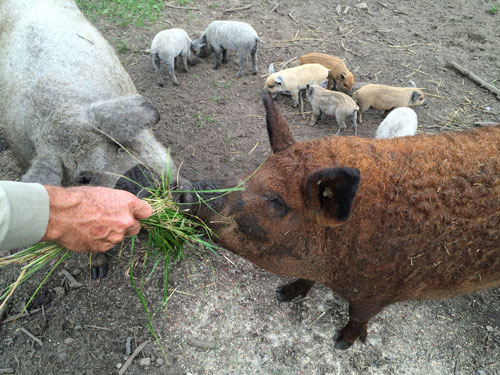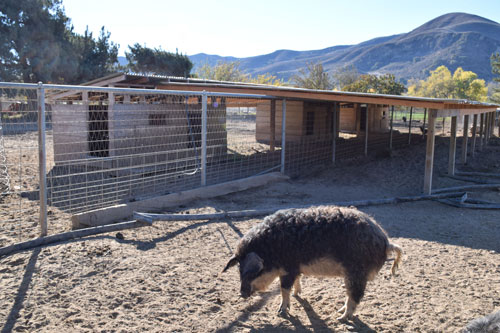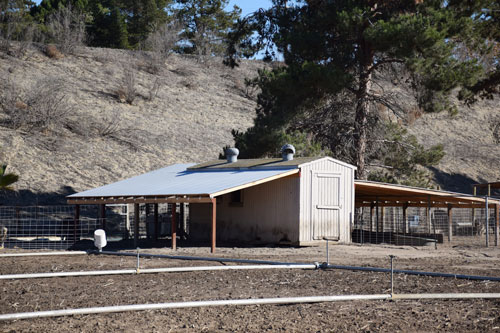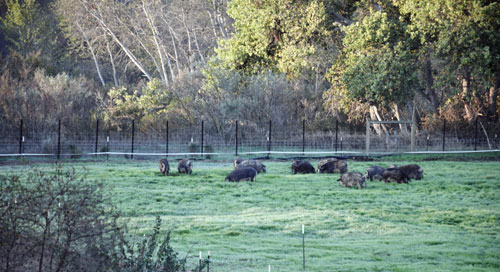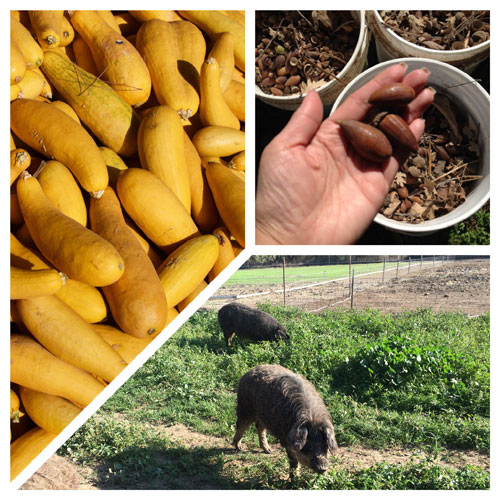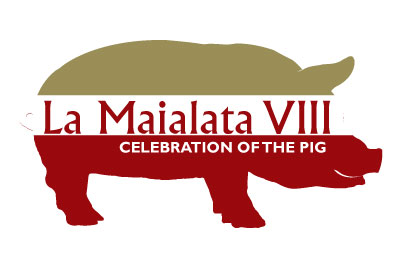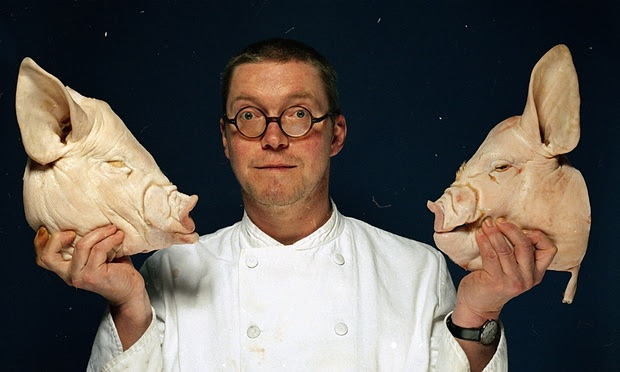Blog & News
WINFIELD FARM SPRING UPDATE – PART 2
Winfield Farm Presents the Magic of Mangalitsa at the American Culinary Federation Chefs de Cuisine of California, Los Angeles Chapter
Cochon 555 was just the start of a whirlwind weekend in LA, promoting Winfield Mangalitsa pork!
Our great adventure began with a chance meeting with Chef Daniel Csotai, who visited Winfield Farm in search of backfat to make Hungarian bacon. A Hungarian who grew up with Mangalitsa pigs and is passionate about their flavor profile, Chef Daniel now also happens to be the secretary of the American Culinary Federation Chefs de Cuisine of California, Los Angeles Chapter. CCAC is a fraternal service organization and member of the national American Culinary Federation, the oldest and largest chef organization in America.
Chef Daniel agreed to help us reach out to the Los Angeles culinary community, introduced us to the CCAC education chair, and that’s how we wound up showcasing Winfield Mangalitsa at a special CCAC event – Bourbon and game tasting, hosted by CCAC member Chef Hugo Miranda at the Four Points by Sheraton Hotel LAX. Except in this case, the “game” was Mangalitsa pork. More serendipitous, the event took place the day after Cochon 555, so after securing a reliable pig-sitter, we got to spend a night in LA – a mini-vacation.
Bruce opened his presentation with a history of Mangalitsa pigs, who nearly went extinct until Spanish prosciiutto-makers discovered that Mangalitsa is on par with famed Iberico de Bellota ham. In fact, Mangalitsas are the only other pig besides Iberico approved to be labeled “pata negra”.
Bruce told chefs how Winfield Farm Mangalitsas are raised – on pasture, with a non-GMO diet consisting of barley and organic produce, finished with acorns and walnuts. Barley preserves the quality of the luscious white fat, he said. Corn turns the fat rancid over time — not a good thing when you’re hanging a ham to dry cure for a couple of years.
Bruce’s nephew, chef Jensen Lorenzen, attended the event with us and extolled the attributes of Mangalitsa pork from a chef’s perspective. Mangalitsa’s prime value is for charcuterie, and several chefs asked technical questions about the curing process and sausage-making. Making sausage is another excellent thing to do with Mangalitsa fat, which is very high in oleic acid – the good fat!
Then came the tasting.
Chef Hugo Miranda has served as Executive Chef in some of the most high-end restaurants in the Los Angeles area. Adding to his experience as a high-end culinarian, Chef Miranda spent half a year in Costa Rica enhancing his culinary expertise in fine local Asian fusion cuisine. His creativity preparing Winfield Mangalitsa loin and rib roast was inspirational – a real tribute to the magic of Mangalitsa pork.
After the feast he revealed his secret: he marinated the roast in a brine with orange juice and herbs for two days! Chef Hugo’s Mangalitsa entrée was melt-in-your-mouth delicious.
His dessert – Mangalitsa bacon-infused bread pudding – was yummy also (although by that time we were so full we couldn’t finish it all).
Chef Hugo received an award from the CCAC for his commitment to the association; it was well deserved. He promised before the event, “Yes I’ll make sure we showcase Mangalitsa!!!” He was true to his word: he really did it !!
Thanks again, Chef Hugo! Everyone at the event loved Winfield Mangalitsa pork!
Photo gallery:
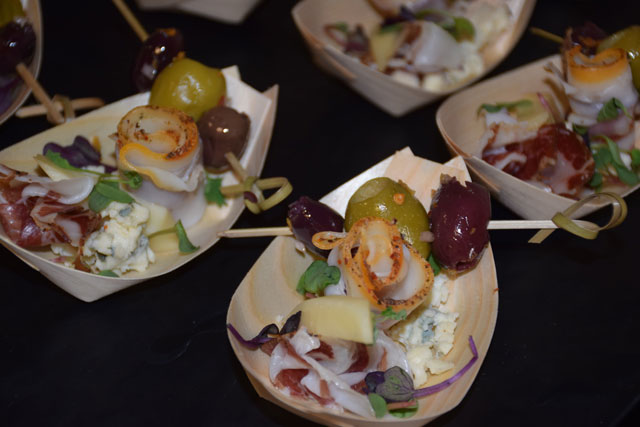 Charcuterie close-up — Coppa, Lomo and Fiocco
Charcuterie close-up — Coppa, Lomo and Fiocco
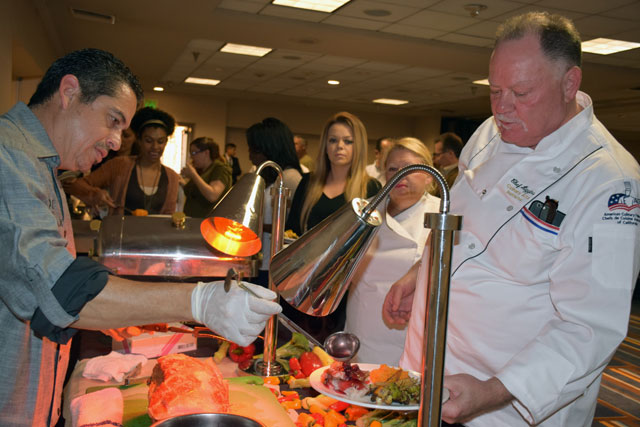 Serving Winfield Mangalitsa loin roast
Serving Winfield Mangalitsa loin roast
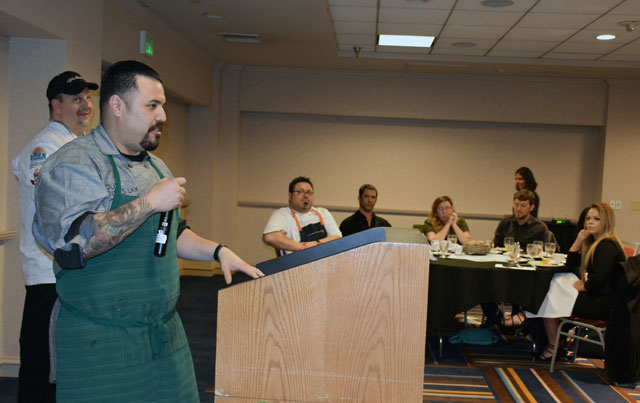 Chef Hugo reveals his secret to preparing mouth-watering Mangalitsa
Chef Hugo reveals his secret to preparing mouth-watering Mangalitsa
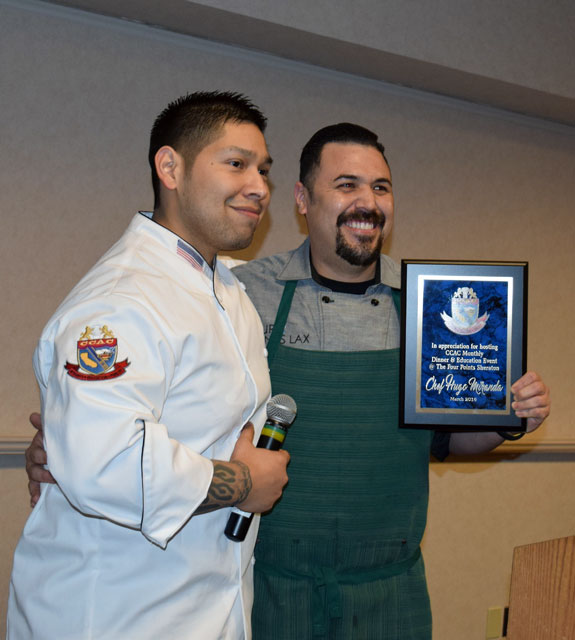 CCAC presents award to Chef Hugo
CCAC presents award to Chef Hugo
WINFIELD FARM SPRING UPDATE – Part 1
Winfield Mangalitsa goes to LA – COCHON 555
Spring is always a busy time at Winfield Farm – and this year is proving to be busier than usual. Besides tending the new crop of Manga piglets, moving (and rebuilding) fence, herding pigs to new pastures, (praying for rain!), we’re ramping up our marketing efforts, with exciting new prospects – many in the City of Angels!
This spring we entered a 200-pound Mangalitsa pig into the Cochon 555 event in LA, which took place at the exclusive Viceroy Hotel in Santa Monica on Sunday March 13.
Cochon is a national competition conducted in 10 locations across the country, where five chefs each create six nose-to-tail bites, to be judged by an elite panel. Our partner in this venture was executive chef Jason Neroni from the Rose Café, the iconic restaurant in the heart of Venice Beach, California that has served locals and travelers alike since 1979. Chef Jason’s menu focuses on local Southern California cuisine with an international influence from his world travels – which included an invitation from the country of Spain to serve as a culinary ambassador, where he worked alongside some of Spain’s best chefs. Spain’s interest in Hungarian Mangalitsa pigs, ranked with Spanish Iberico as the only black-footed hogs allowed to be labeled ‘pata negra’, was instrumental in saving Mangalitsas from extinction. Chef Jason knows all about Mangalitsas — so he was the perfect partner for our Hungarian wooly pig.
Chef Jason’s menu for Cochon is a statement to his creativity – and his skill in displaying the rich flavor profile of Mangalitsa pork:
Testa pastrami and taleggio croissant / deli pickles (delicious)
Roasted pork meatballs (amazing!) / smoked burrata, chicarones (melt in your mouth crispy), tomato marmalade
Lasagna / fennel and pork sugo, porcini jus (in the opinion of many, the best bite in the competition!)
Buerre de jamon / blood butter, shaved prosciutto cotto and lomo, demi baguette (sooo good!)
Double ramen / pork fat, spring garlic, fermented turnips, poached belly, noodles (the best of all the ramens)
Stuffed trotter terrine / foie gras, black truffles, cognac soaked morels (absolutely elegant)
As participating farmers, we were able to sample the tastings of all the chefs ahead of the crowd that swarmed the Viceroy’s patio. Both Bruce and I voted for Chef Jason as the best bites in the competition!! We would have voted the same way even if our pig wasn’t competing! Chef Jason Neroni really did Winfield Farm Mangalitsa proud.
Thanks again, Chef!!
A photo gallery of Cochon activity
3rd Annual Santa Barbara Food & Wine Weekend
Join us in Santa Barbara April 15-17th for the 3rd Annual Santa Barbara Food & Wine Weekend
http://www.bacararesort.com/santa-barbara-food-wine-weekend/?NCK=8889063421
Winfield Farm is delighted to represent Santa Ynez Valley – Buellton farms at the Neighborhood Market Tour on Sunday April 17 at the Bacara,
11 AM to 2 PM. Visit our table and taste the magical creations of Chef Jensen Lorenzen. We look forward to seeing you.
COCHON 555 LA competition
Winfield Farm is delighted to partner with Chef Jason Neroni, from The Rose Cafe in Venice, in the COCHON 555 LA competition at the Viceroy in Santa Monica this Sunday, March 13. Chef Neroni is preparing magical dishes from a Winfield Farm Mangalitsa. Taste the magic on Sunday afternoon. Please come to the celebration and experience the magic yourself – tickets are still available and can be obtained here: http://events.cochon555.com/los_angeles_2016_industry
COCHON 555 Los Angeles, March 13
Experience this must-see culinary competition, five chefs cooking over 36 dishes prepared from whole locally-raised heritage breed pigs
[divider style=”shadow”]
Winfield Farm is participating and our partner chef is Chef Jason Neroni at the Rose Cafe in Venice.
Created in 2008 in response to the lack of education around heritage breed pigs. The event series started from a thread of conversations where family farmers struggled to educate chefs, restaurants looked to source exceptional ingredients, and consumers sought out responsibly raised proteins. They all converged into one idea: the ultimate quest of flavor.
For more information visit: http://cochon555.com/2016-tour/los-angeles/
[divider style=”shadow”]
Jane Says: You Shouldn’t Be Afraid of Nitrites

(Photo: John Anthony Rizo/Getty Images)
To get a handle on nitrites, it helps to understand the role salting plays in curing meats. In On Food and Cooking, food scientist Harold McGee writes that salting, like drying, preserves meat by depriving bacteria and molds of water. “The addition of salt—sodium chloride—to meat creates such a high concentration of dissolved sodium and chloride ions outside the microbes that the water inside their cells is drawn out, salt is drawn in, and their cellular machinery is disrupted. The microbes either die or slow down drastically.” Chemistry is inherently operatic, when you think about it.
The use of nitrite remains an integral part of traditional curing methods for several reasons:
• It reacts in the meat to form nitric oxide, which binds to the iron atom in the red pigment myoglobin and prevents the iron from causing the fat to oxidize. That binding also produces the rosy pink-red color of cured meats—what we’ve been used to aesthetically since about the 10th century, when the Romans began adding saltpeter to meat to obtain that desired color.
• In terms of flavor, it contributes a characteristic sharpness that keeps evolving; a country ham aged for 18 months, for instance, has had time to develop a deep, resonant whang. And because nitrite is a powerful antioxidant, it helps keep the flavor of cured meats vibrant and free from off-flavors.
• Nitrite also squashes a variety of pathogens, including, most important, Clostridium botulinum, the bacterium that can cause rare but deadly botulism. Botulus is a Latin word for “sausage,” by the way, and the bacterium came by its name from its pathological association with Wurstvergiftung, or “sausage poisoning,” first investigated in the late 18th century in Germany.
But if you’re worried about consuming these preserving agents, let me break this to you as gently as I can: Even if you wouldn’t touch a ham sandwich, pepperoni pizza, or salumi plate with a 10-foot pole, you can no more avoid nitrate and nitrite than fly to the moon. According to sources such as “Human safety controversies surrounding nitrate and nitrite in the diet,” published in the journal Nitric Oxide: Biology and Chemistry, our saliva, surprisingly, “accounts for approximately 93.0% of the total daily ingestion of nitrite while foods account for a very small portion of the overall daily nitrite intake. This is due to the chemical reduction of salivary nitrate to nitrite by commensal bacteria in the oral cavity.” Forget cured meats; if you’re really concerned about nitrite, better stop swallowing.
Or, for that matter, eating vegetables, which contain the largest component (about 87 percent) of our dietary intake of nitrate. Those with the highest levels of nitrate are red beets, spinach, radishes, celery, lettuce, cabbage, fennel, broccoli, cucumbers, and leeks. If you’re interested in diving deeper, check out “Nitrate in vegetables,” a report by the Scientific Panel on Contaminants in the Food Chain of the European Food Safety Authority published in the EFSA Journal. I don’t imagine nitrate smoothies are going to be labeled as such at juice bars anytime soon, but optimizing the nitrate content in beet juice is of great interest to athletes and sports nutritionists.
While we’re on the subject of vegetables, let’s take a moment to contemplate “nitrite-free” bacon, hot dogs, etc. If you read the packages carefully, you’ll notice that what they actually say is “no nitrates or nitrites added.” Big difference in meaning there. What the producers use instead is celery powder or celery juice, both concentrated sources of nitrate, which is converted to nitrite by a bacterial culture.
So what makes nitrate and nitrite so controversial in the first place? In large enough amounts they are indeed toxic, the way anything is, even water. The main toxic effect is methemoglobinemia, a rare (and reversible) condition. Accidental poisonings aside, you would have to ingest thousands of hot dogs at a single sitting in order to overdose. The most eaten by Joey Chestnut, who won his eighth Nathan’s Hot Dog Eating Contest this year, is 61.
But cancer, of course, is everyone’s main concern. The potential of nitrate/nitrite to form carcinogenic N-nitrosamines in cured meats was first identified in 1971, according to the historical summary in the Nitric Oxide article mentioned above. “Their formation can take place only under special conditions where secondary amines are present, nitrite is available to react, near neutral pH is found, and product temperatures reach greater than 130°C, such as during the frying of bacon.”
The resulting shit show—er, groundswell of public concern—led to new regulations that lowered the amount of added nitrites, and new production practices were implemented. Among those practices was the addition of ascorbic acid (aka vitamin C, sodium ascorbate, erythorbic acid, sodium erythorbate), which inhibits the chemical reaction that can lead to the formation of nitrosamines. Additional limits exist for bacon: Nitrate is not permitted, so that actual concentrations of nitrite can be more precisely controlled; it’s also required to have either 550 parts per million added sodium erythorbate or sodium ascorbate, regardless of curing method, to inhibit the potential for nitrosamine formation during frying.
In a 2009 nationwide survey of cured meats and vegetables, it was “concluded that consistently lower levels of residual nitrate and nitrite than those from a survey reported by the National Academy of Sciences in 1981 existed.”
“Residual nitrite levels of 7 ppm in cooked sausages (hot dogs), 7 ppm in bacon, and 7 ppm in hams which have fallen from 10–31 ppm, 12–42 ppm, and 16–37 ppm, respectively, when compared to data reported in the NAS study,” the study continued. Overall, the survey found a nearly 80 percent reduction in nitrite levels in food products between 1975 and 2009. “Based on this data,” the authors write, “it can be concluded that cured meats provide minimal contributions to the human intake amounts of nitrate and nitrite.”
Interestingly, the Nitric Oxide piece also points out that in the 1990s, a new consumer product containing nitrate was introduced. “Toothpaste for sensitive teeth is now common and contains high levels (5% or 50,000 ppm (mg/kg)) of potassium nitrate. While under FDA regulatory purview, this newer source of human exposure has had no public controversy which is an interesting social question considering the debate concerning cured meats and the known salivary reduction of nitrate to nitrite.”
The advice to avoid cured meats because of possible risks related to cancer continues to resurface periodically. But since 1981, when the National Academy of Sciences first examined the scientific literature and concluded there was no link between nitrate/nitrite consumption and human cancers, there have been hundreds of studies that have examined the potential health risks. Aside from a few studies with demonstrably weak epidemiological data, the vast majority of studies have found no link.
Although research has failed to prove that nitrate or nitrite causes cancer, it has turned up a number of intriguing health benefits and possible pharmacological roles. The nitrites in our saliva, for example, seem to help protect us against foodborne pathogens and stomach ailments. And nitric oxide—the stuff that fixes the color in cured meats—has been found to be a signaling molecule, telling arteries when to expand (thus regulating blood pressure) and immune cells when to kill bacteria, and it helps brain cells communicate with one another. A lack of nitric oxide production in our bodies can lead to all sorts of unfortunate consequences, including hypertension, atherosclerosis, and thrombosis resulting in heart attack and stroke. The significance of this was of such paramount importance that the 1998 Nobel Prize in Physiology or Medicine was awarded to three American scientists for its discovery. I like to think they celebrated with a weenie roast.
Read the original post: http://www.takepart.com/
The Pork Obsessives: Inside The Secret Online Society Inspiring America’s Best Chefs

Behind the James Beard Award and the burgeoning restaurant empire, Linton Hopkins is really just an obsessive pork nerd. The Atlanta-based chef founded the Fellowship of Country Ham Slicers, which celebrates the craft of hand-slicing aged legs of swine, and created a collector’s edition Country Hams of the South placemat (read: treasure map) for the Atlanta Food & Wine Festival. The website for Holeman and Finch, his casual outpost in Atlanta, has a very scientific-looking photo on its homepage that claims ham can cure virtually any malady.
Hopkins’ devotion to swine is borderline religious, so it’s fair to ask: Where would a person like him find spiritual kinship with people who worship pork as much as he does?
The answer is The Salt Cured Pig—a private, invite-only group that can be found on the Facebook super highway somewhere between Bronies Unite Mid-Atlantic and Nuke the Whales.
“You can trust that The Salt Cured Pig is a community of people who actually care about how we procure, practice, and preserve our craft, “ said Hopkins.
 The Salt Cured Pig founder John Patterson has seen the group grow to over 8,000 members.
The Salt Cured Pig founder John Patterson has seen the group grow to over 8,000 members.
I. A Global Network of Swine Fanatics
The Salt Cured Pig was founded in 2010 by Michigan native John Patterson, who has since watched his cultish community of swine enthusiasts grow to more than 8,000 members. An average of 100 new people are invited into the group every week by friends already on the inside.
This is a place where rockstar butchers and unadulterated porknography take precedence over the media’s breathless rediscovery of edible plant life, and Patterson loves it. And why wouldn’t he? America’s most knowledgeable farmers, meat processors, butchers, charcutiers, chefs, and educators have essentially open-sourced their collective wisdom in his forum.
America’s most knowledgeable farmers, meat processors, butchers, charcutiers, chefs, and educators have open-sourced their collective wisdom in the forum. It’s like getting private batting lessons from George Brett, the Kansas City Royals Hall of Famer
“This was a selfish venture in the beginning,” said Patterson. “I bankrupted myself buying cured meats at Zingerman’s one day and decided, if people have been doing this for thousands of years, I should just do it myself.”
The first leg of The Salt Cured Pig journey is all about Patterson’s original vision of setting out on one’s own into the wide world of DIY curing. Certainly that was my experience when I joined shortly after the group’s inception. For the better part of that first year of membership, my 900-square-foot abode in Washington, D.C. was filled with various meat-curing experiments. Pancetta strung up in the kitchen window and pork jowl hanging from an old planter hook in the corner. Every time I had a question or near meltdown, I went to the group.
Answers would come from people like Josh and Jessica Applestone, the forebears of nouveau butchery at Fleisher’s Pasture-Raised Meats, or Kate Hill, an American expat living in Gascony who runs a pork-centric cooking school, Kitchen at Camont, with a family of French master pig farmers and butchers named the Chapolards. It was like getting private batting lessons from George Brett, the Kansas City Royals Hall of Famer who was my childhood hero. I achieved delicious successes and a few spectacular failures (amazingly, my wife still agreed to marry me that year). More than once or twice, I considered training to become a butcher and opening a shop.
“Where else can charcuterie enthusiasts around the world get access to an incredible network like this 24 hours a day?” asked Hill, a group administrator. “When I’m having a morning café au lait in France, someone in Tucson is tending his smoker, a charcutier in Bangkok is talking to a pig farmer in Australia, and a Korean chef is sharing his wares with us all.”
II. Chefs Find Inspiration
A search of the group brings up some culinary star-power, including Craig Deihl, Jonathan Waxman, Nate Anda, Paul Kahan, David Varley, Ryan Farr, Lee Anne Wong, Tom Mylan, and Celina Tio. Peter Kaminsky, whose 2005 book Pig Perfect introduced the world to Chuck Talbott’s pioneering research on heritage pig breeds and flavor, is also a member (as is Talbott). Despite their high-profile status, some still look to The Salt Cured Pig as a place for continuous learning and experimentation.
 Chefs like Rick McKee (pictured above) and Craig Deihl credit the group with inspiring dishes that appear on his menu. (Photo: John Smoak)
Chefs like Rick McKee (pictured above) and Craig Deihl credit the group with inspiring dishes that appear on his menu. (Photo: John Smoak)
“What’s really important to me is the way people are open and post photos about failure, which is so important to getting better,” said Deihl, whose charcuterie work at Cypress and Artisan Meat Share in Charleston is second to none in the U.S. right now. “Watching people share non-pork ideas, like salmon belly nduja and shrimp sausage and swordfish bacon, has also made me think about what new things I can do in the restaurants.”
VIPs like Deihl have undoubtedly had an impact in The Salt Cured Pig forum, but the lesser-known professionals represent the group’s real value. These are the workaday evangelists who are carrying forward the movement for responsible pig husbandry and curing.
“I think it is a really valuable resource for anyone in the restaurant business,” said Justin Brunson, owner and executive chef at Old Major, the Denver Bacon Company, and a constellation of other meat-driven establishments in the Mile High City. “I get tips on chili pastes, peppers, and salts for sausage and curing in the group all the time, and the members gave me a ton of help on specs when I built my first curing chamber.”
Brunson is known among pork nerds, and he and others like him are the most active in the group’s conversation strings, offering hard-won wisdom to less-seasoned members and doing their best to keep the group focused on safety, tradition, and quality. Others include Cathy Barrow, the writer behind MrsWheelBarrow.com; Adam Danforth, the James Beard Award-winning author and butcher; Carl Blake, who runs Rustik Rooster Farms in Iowa; Brady Lowe, the founder of Cochon 555; Bob Perry, Chef in Residence at the University of Kentucky College of Agriculture; and Bob Del Grosso, a micropaleontologist by training who has taught for decades at the Culinary Institute of America and other institutions.
“Before the advent of groups like this, the likelihood that someone like Carl Blake would be sharing hog-farming tips with people in Michigan and Austria was almost nil,” said Del Grosso. “During my tenure as a Salt Cured Pig administrator I’ve seen countless examples of people who, inspired by something they read there, pick up knives and saws to butcher their food, pick up stakes and move to farms. That is significant.”
“I look at the group every day to see what people are doing,” said Brandon Johns, chef-owner of Grange Kitchen & Bar, an Ann Arbor restaurant that counts other members among its regular patrons. “It’s great to see them using old-school technique, like hand-cutting sausage, that you can’t find anywhere anymore, and I’m always getting inspiration to try new things.”
There’s the issue of the pesky vegetarians who have regularly infiltrated the group, calling ironically for Patterson’s slaughter.
With all the collective wisdom and shared support, is the forum having a wider impact? Anecdotally, those of us who have been in the group since early on have seen growth in the number of heritage-pig farms, professional curing operations, and restaurants doing in-house charcuterie. According to a three-year study by the Livestock Conservancy, an organization that works on genetic conservation and promotion of heritage-breed animals, the numbers of heritage-breed pigs overall have been growing in recent years. Just a couple days ago, member Stephen Prochaska announced the opening of his new Cedar Rapids, Iowa sausage shop, The Sausage Foundry, and thanked the group for insights and input.
“A goal in the beginning was to make sure that these things wouldn’t just be fads,” said Patterson. “I hope we are helping secure a better future for meat in America.”
III. The Swine Schism, Militant Vegetarians, and the Power of Community
That remains to be seen, but we wouldn’t even be having this conversation without the committed core constituency in The Salt Cured Pig. Whether the center can hold is another question, because Patterson’s ride hasn’t all been pillowy white fatback and silky sausage gravy. The group has, at times, been greased by drama.
Firstly, there’s the issue of the pesky vegetarians who have infiltrated the group regularly, calling (ironically) for Patterson’s slaughter and, on more than one occasion, getting him thrown off of Facebook (he maintains aliases including Bobby Berkshire, named after the famous breed of curing hogs). One woman was so aggressive that Patterson did a little research and cornered her with Google Maps evidence of a charcoal grill in her backyard. She backed off and the veg hackers have been quiet recently.
Patterson’s ride hasn’t all been pillowy white fatback and silky sausage gravy. The group, like so many young phenomena, has at times been greased by drama.
Then there was the infamous swine schism. In the early days, when The Salt Cured Pig was small, most of the members were in it to share advanced practices, but things changed as the numbers roared upwards. Some griped that bacon became too dominant a theme (is that possible?) and the comment strings got too heated and meme-heavy. The full administrative team tried to exert some quality control, but the divide had already calcified. A breakaway faction of accomplished home charcutiers, led by bloggers Scott Stegen and Jason Molinari, peeled off and formed Sausage Debauchery, a rival group with a less freewheeling and more pedantic bent. To date, Sausage Debauchery has more than 5,400 members.
“I think the two communities are alternate sides of the same coin: The Salt Cured Pig is great for people just getting into the curing and overcoming their fear, and Sausage Debauchery is like a watering hole for what I call the ‘meat mafia,’ those of us who live the craft every day,” said Hank Shaw, the James Beard Award-winning blogger and author of Hunt, Gather, Cook: Finding the Forgotten Feast and Duck, Duck, Goose.
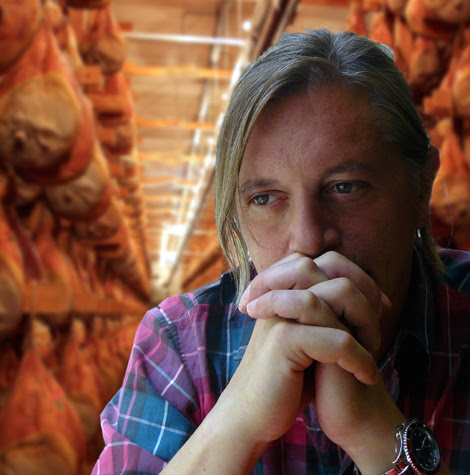
Paolo Sossai, a spiritual guide for pork forums like The Salt Cured Pig, embodied the restless pursuit of quality swine products.
Many people hold dual membership and foster friendships in both groups, and the kinship shows through more than any split—as the story of Paolo Sossai makes clear. Sossai, who died from cancer last month, may have been the pioneering digital community organizer for home charcutiers as the head of the Salumi Casalinghi Forum, an Italian listserv where he shared old-world techniques and facilitated discussion on the craft. He was a mentor to many in both The Salt Cured Pig and Sausage Debauchery, dropping in and out of discussions in both groups to offer patient, broken-English–infused explanations of things like the definition of porchetta di testa, and the regional difference between sopressa and sopressata. His death brought forth an outpouring of sympathy.
“Paolo’s legacy is the real sense of community in terms of passion for craft, willingness to help and a wonderful intolerance of showiness or lack of humility,” said John Gower, a member of both The Salt Cured Pig and Sausage Debauchery, who raises pigs on a sustainable farm in North Devon, England. “In life and death, he has only encouraged this sense all the more amongst many of us.”
Sossai, like Patterson, Stegen, and many others, was the bond that held the communities together and pushed them forward towards a vision of better, more sustainable farms and food. Which reminds me: I have a big batch of heritage pork shoulder in the freezer that needs my attention.
Read the original post: http://firstwefeast.com/eat/the-pork-obsessives/
Winfield Farm Fall Update
News Alert: We now have a fresh supply of Winfield Mangalitsa pork cuts in our Mangalitsa Market
Now on hand: sliced hickory-smoked bacon, bone-in chops, ground pork (sweet Italian); bone-in hickory smoked hams, bone-in loin roast, Boston butt roast, smoked hocks.
Visit our Mangalitsa Market online, but please call first to ensure availability. Supplies are going quickly!
Good grief! Where does time go?
Fall is in the air, even though the days were still uncommonly warm heading into Thanksgiving week. Bruce has been a busy man this summer, “pig-herding” our Mangalitsas, whose population doubled this spring when eight sows farrowed a total of 60 piglets. The “gang of 60” is now 5-6 months old, and a very rowdy bunch indeed, but it’s hilarious to watch them cavort (you can see the circus on video on the Winfield Farm Facebook page*. Check out the link: https://www.winfieldfarm.us/?p=1381).
Pigs cannot be herded, by the way. We discovered this after the group of “30”, farrowed last summer and ready for market, broke through the fence separating them from Bruce’s garden, where more than 100 grafted heirloom tomato plants were nearly ready to harvest, along with the rest of the produce we’d grown to stock our farm stand this summer. Porcine glee was evident – and not to be dissuaded – as the marauders systematically demolished everything in what seemed record time: 15 minutes was all it took to undo several months of hard labor. Asi es la vida…
(Lesson learned: Bruce will erect a double fence between garden and piggies next year!)
On a positive note, Winfield Farm Mangas have attracted attention from a growing number of world-class chefs. In the Santa Ynez Valley, Industrial Eats in Buellton is a steady customer, as is Full of Life Flatbread in Los Alamos. The Ballard Inn now also features Winfield Farm Mangalitsa pork, and Hitching Post II is a fan, too. In fact, chef/owner Frank Ostini took Winfield Mangalitsa chops to the Celebration of Harvest Festival in October and did a cooking demo. According to reviews: it was fabulous.
Frank also extolled Winfield Mangalitsa pork in a “Pairing Wine with Fire” feature article in the Santa Barbara Independent:
Which meat with chardonnay?
Ostini: I’m pining for a Winfield Farm Mangalitsa pork chop, grown by Santa Ynez Valley rancher Bruce Steele, who is my neighbor. It is for sure the greatest “other white meat.” The white part of this is the fat that is so flavorful, rich, and glorious when grilled and cuts through the acidity of the [Hitching Post] Sta. Rita Hills chardonnay, making it a perfect match….
Mattei’s Tavern in Los Olivos also will begin featuring Winfield Mangalitsa pork soon. We delivered our first pig on November 20, and charcuterie chef Drew Tarp is excited to create new head-to-hoof delicacies.
One outstanding feature of Mangalitsa is its pure white, mouth-watering fat. A rare heritage lard hog, prime Mangalitsa pork may contain as much as 50 percent fat – but it’s very high in oleic acid–the good fat!
Brian Polcyn, well-known chef/author of the book Charcuterie, gave us a lesson in Mangalitsa fat vs. other pigs at the Mangalitsa Breeders Conference in Michigan this past summer. Bruce and I actually escaped for a “vacation” — while son Eric came down from the Bay Area to mind our pigs. (*He created the video of a typical day in the life — feeding the rowdies, making wallows etc. – and filmed it double-time for effect!)
As part of the breeders conference, we toured the meat department at Michigan State University, an impressive facility, where Polcyn illustrated the difference between Manga and a typical market pig — at least double the fat cap, which is what makes Mangalitsa flavor so sublime. Fat is also responsible for making Mangalitsa perfect for charcuterie — ranked with Spanish Iberico Bellota as the best prosciutto in the world!
Brian Polcyn illustrates why chefs pay more for Mangalitsa pork: taste and quality.
“Fat is flavor. Fat is our friend. We love fat!”
The Mangalitsa Breeders Conference was a great getaway for both of us. Much of the activity took place at Wilhelm Kohl and partner Marc Santucci’s “Pure Mangalitsa” farm in Haslett MI, where they are importing new blood lines for blond and red Mangalitsas from Hungary via quarantine in the Netherlands.
After the instructional class session at MSU’s meat lab, the conference transformed into a 2-day party – a Mangalitsa feast, where Mangalitsa breeders from all over the country networked, shared their home-made charcuterie and cooked up a stew of – Mangalitsa.
Another highlight of our adventure: we met Peter Toth, president of the Hungarian Mangalitsa Breeders Association, who is widely acclaimed as the person who saved Mangalitsa pigs from extinction.
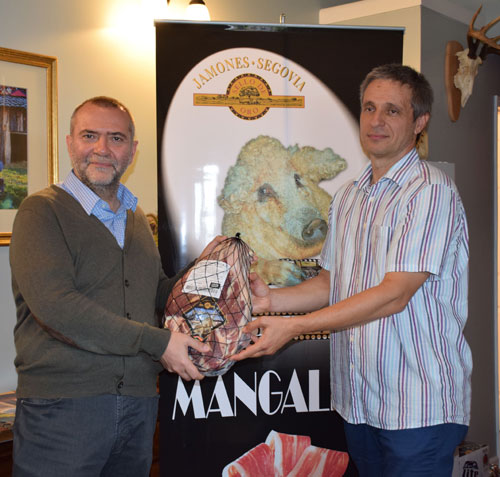
Peter Toth, left and Csaba Papp, Mangalitsa genetics expert, pose before a poster promoting Hungarian Mangalitsa
Now that the dog days of summer are waning, Bruce is scrambling to prepare for the monster El Niño that is predicted to strike this winter. Early forecasts project this as at least as tumultuous as the 1997 event, and perhaps a record-breaker (cautionary news for those of us who live in the 100-year flood plain of the Santa Ynez River…)
Bruce built an “ark”, a huge covered structure about 26 feet wide and 80 feet long, incorporating our farrowing sheds, to provide shelter on both sides of two pig pastures.
In addition, the gang of 60 will have access to our 70 x 30 hoop house and the old gray chicken coop that Bruce remodeled to shelter pigs.
We also leased several acres near by on Drum Canyon Road, on high ground, just in case our fields go underwater here… and that requires more fence building.
Bruce is also working to establish cover on our fields before the rains come, to retain the topsoil. Thankfully the grass he seeded last spring is regenerating nicely after rotating pigs off pasture — well enough to let our market-ready pigs back on it for a little foraging fun before they go to market.
Winfield Mangalitsas have a good life — and a naturally good diet based on pasture, squash, acorns in season and barley (to keep white fat white and pure). Winfield pigs eat NO GMOs…
One more thing that we’re proud to say: We invested in solar last year, so we’re now running our entire farm, including 2 wells, the house and barn, 3 freezers – everything – on alternative energy this year.
We have a new supply of Mangalitsa pork on hand in time for the holidays. Please viist our Mangalitsa Market and email or call to order. Taste the magic for yourself!
We wish you a very Happy Holiday season.
All our best,
Bruce & Diane
La Maialata VIII
We’re delighted that Winfield Farm Mangalitsa will be featured at La Maialata VIII at the acclaimed Cantinetta Luca in Carmel.
La Maialata VIII
Thursday & Friday, December 10 & 11, 2015
5 – 9:30 pm
Executive Chef / Partner Jason Balestrieri presents two evenings where every dish on the menu features yet another amazing variation on the succulent hog to include multiple selections of antipasti, soups, sides, pizzas, first courses, and main courses.
This year will feature Mangalitsa Pig from Winfield Farm in Buellton, CA & Berkshire Pig from Linda’s in Carmel Valley.
Make your reservations now for these very special evenings.
Cantinetta Luca
Dolores Street between Ocean and Seventh
Carmel-by-the-Sea, California
Phone: 831.625.6500
Email: info@cantinettaluca.com
Online Reservations: opentable.com
There are just so many imaginative ways to deal with a pig’s head
St John’s Fergus Henderson. King of nose to tail eating. Photograph: Suki Dhanda for the Observer
Boning a pig’s head isn’t easy. My friend, the food historian Dr Annie Gray, tried it once. It took her and a friend five hours. She was following the 1846 instructions of Charles Elmé Francatelli, once chef to Queen Victoria, who was an old hand at the whole pig boning business. The key is to get a head severed at the second vertebrae, so that when you have tunnel-boned the skull, working the blade carefully about the jaw and skull, and then refilled it with the forcemeat, you have a flap of skin to be re-stitched at the back.
Before you can do that, you have to take the pig’s head, the eyes stitched closed, and smear it with six pounds of salt, handfuls of saltpetre, sugar, cloves, mace, garlic, thyme, marjoram and basil. It then needs to be submerged in a quart of port for two weeks and turned every day.
Next you stuff it with sausagemeat, and a mixture of tongue, fatty bacon, truffles and pistachio kernels. It now needs to be wrapped in butter-rubbed muslin and simmered in a stock full of cow’s feet and grouse carcasses for five hours, before being allowed to cool. Finally, decorate it with piped lard and separately baked pastry pieces. Queen Victoria had a head like this on her table at Christmas every year. Apparently the upper classes have long appreciated the ceremony that attends the boning of pig heads.
Preparing a pig’s head this way is tricky, of course, because you’re trying to keep it in one piece. If that’s not an issue you can cut off the pieces you want: the cheeks ears and snout. Pig cheeks braise beautifully. The ears have many uses. Fuchsia Dunlop has a great recipe in her Revolutionary Chinese Cookbook for an aromatic salad, which is all about chilli oil and sesame oil, and the thin slices of gelatinous skin sandwiching a crunch of cartilage.
Alternatively, April Bloomfield does a crispy pig’s ear salad, in which they become the biggest curve of pork scratching imaginable. The Pitt Cue boys recommend boiling them for a couple of hours and refrigerating overnight, before cutting into strips, deep frying them and serving with a habanero sauce. At Duck & Waffle, they dust crispy strips of ear with a sweet salty mix. They taste like Frazzles.
If this doesn’t appeal, you can always boil a head until the flesh falls away. Next, remove all the meat. There are now two ways to go. Spice it up the old English way with lots of mace and white pepper, and press it to make a classic brawn. Or (again, pace Pitt Cue) form it into a sausage bound in clingfilm. Once refrigerated and set, cut it into discs, bread crumb and deep fry to make pig’s head croquettes.
Alternatively, take the whole thing and, as they do at St John, slow roast it for hours until the meat falls from the bones, and the skin shatters beneath your teeth like savoury glass. Think of this as a self-boning pig’s head, which is a neat trick if you can pull it off. Of course, there may be other ways to go about boning a pig’s head.
Originally posted: http://www.theguardian.com/

